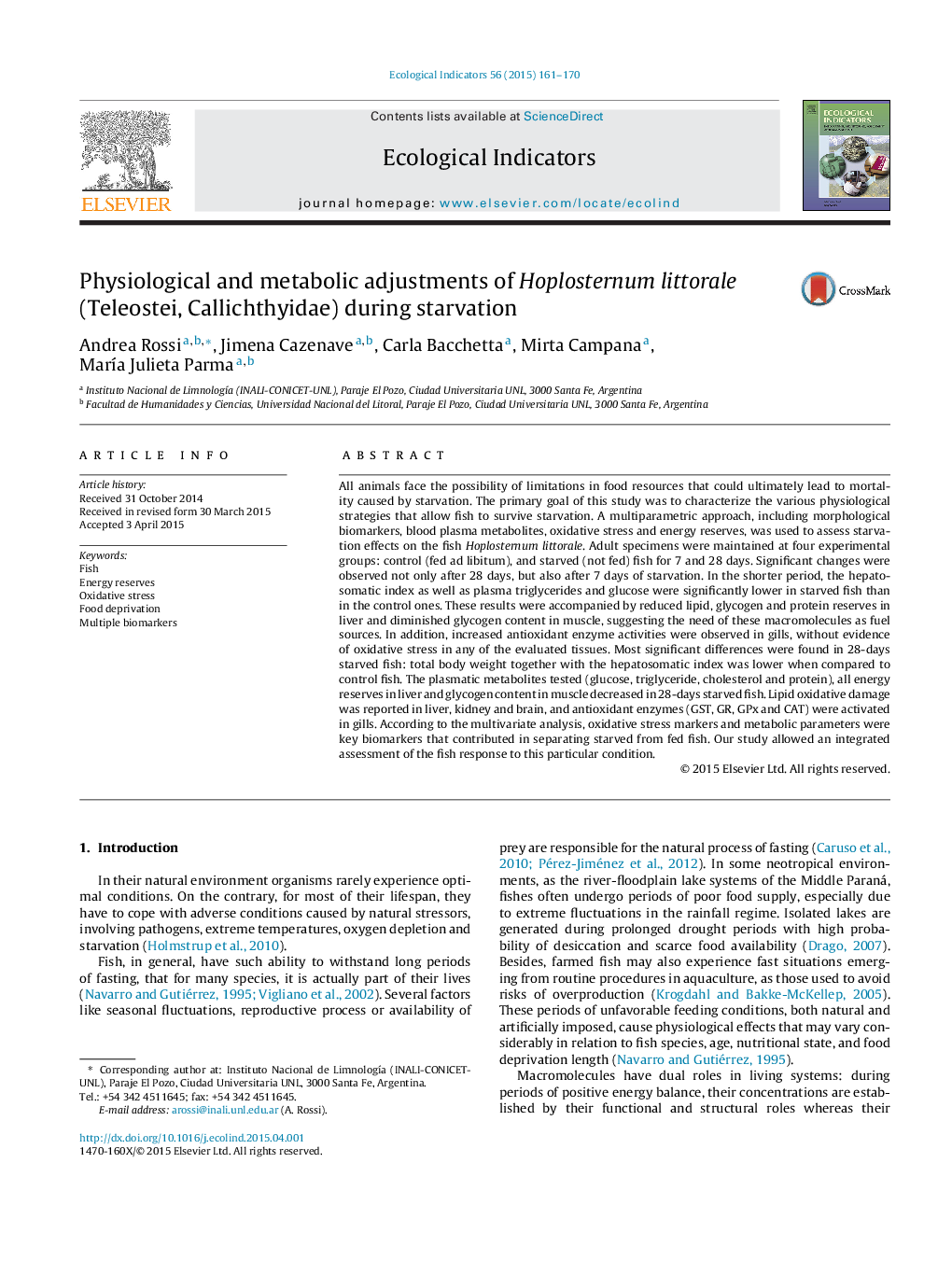| کد مقاله | کد نشریه | سال انتشار | مقاله انگلیسی | نسخه تمام متن |
|---|---|---|---|---|
| 6294352 | 1617145 | 2015 | 10 صفحه PDF | دانلود رایگان |
عنوان انگلیسی مقاله ISI
Physiological and metabolic adjustments of Hoplosternum littorale (Teleostei, Callichthyidae) during starvation
دانلود مقاله + سفارش ترجمه
دانلود مقاله ISI انگلیسی
رایگان برای ایرانیان
کلمات کلیدی
موضوعات مرتبط
علوم زیستی و بیوفناوری
علوم کشاورزی و بیولوژیک
بوم شناسی، تکامل، رفتار و سامانه شناسی
پیش نمایش صفحه اول مقاله

چکیده انگلیسی
All animals face the possibility of limitations in food resources that could ultimately lead to mortality caused by starvation. The primary goal of this study was to characterize the various physiological strategies that allow fish to survive starvation. A multiparametric approach, including morphological biomarkers, blood plasma metabolites, oxidative stress and energy reserves, was used to assess starvation effects on the fish Hoplosternum littorale. Adult specimens were maintained at four experimental groups: control (fed ad libitum), and starved (not fed) fish for 7 and 28 days. Significant changes were observed not only after 28 days, but also after 7 days of starvation. In the shorter period, the hepatosomatic index as well as plasma triglycerides and glucose were significantly lower in starved fish than in the control ones. These results were accompanied by reduced lipid, glycogen and protein reserves in liver and diminished glycogen content in muscle, suggesting the need of these macromolecules as fuel sources. In addition, increased antioxidant enzyme activities were observed in gills, without evidence of oxidative stress in any of the evaluated tissues. Most significant differences were found in 28-days starved fish: total body weight together with the hepatosomatic index was lower when compared to control fish. The plasmatic metabolites tested (glucose, triglyceride, cholesterol and protein), all energy reserves in liver and glycogen content in muscle decreased in 28-days starved fish. Lipid oxidative damage was reported in liver, kidney and brain, and antioxidant enzymes (GST, GR, GPx and CAT) were activated in gills. According to the multivariate analysis, oxidative stress markers and metabolic parameters were key biomarkers that contributed in separating starved from fed fish. Our study allowed an integrated assessment of the fish response to this particular condition.
ناشر
Database: Elsevier - ScienceDirect (ساینس دایرکت)
Journal: Ecological Indicators - Volume 56, September 2015, Pages 161-170
Journal: Ecological Indicators - Volume 56, September 2015, Pages 161-170
نویسندگان
Andrea Rossi, Jimena Cazenave, Carla Bacchetta, Mirta Campana, MarÃa Julieta Parma,